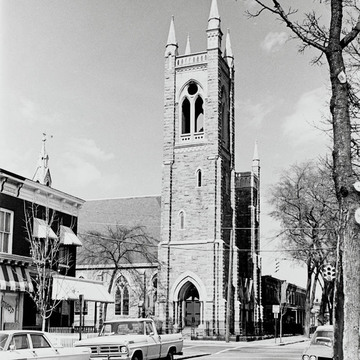The twin towers of this ashlar-trimmed, rockfaced masonry structure make it the dominant neighborhood landmark. Oregon Hill's great benefactor endowed this project to replace an earlier frame chapel in Oregon Hill. Grace Arents was a sophisticated architectural patron who selected an Elkhart, Indiana, architect because of his reputation as a designer of Episcopal churches. Arents was deeply involved with the project, to the point of serving as the contractor. Within and without, from the hammerbeams in the sanctuary to the exterior stonework, the building is imbued with the ideals of honest Gothic architecture advocated by A. W. N. Pugin and Ralph Adams Cram. The building was a substantial departure from the less academic interpretation that had characterized a number of earlier Gothic Revival
You are here
St. Andrew's Episcopal Church
1900–1903, A. H. Ellwood. 1904, parish hall, Noland and Baskervill. Laurel St. at Idlewood Ave.
If SAH Archipedia has been useful to you, please consider supporting it.
SAH Archipedia tells the story of the United States through its buildings, landscapes, and cities. This freely available resource empowers the public with authoritative knowledge that deepens their understanding and appreciation of the built environment. But the Society of Architectural Historians, which created SAH Archipedia with University of Virginia Press, needs your support to maintain the high-caliber research, writing, photography, cartography, editing, design, and programming that make SAH Archipedia a trusted online resource available to all who value the history of place, heritage tourism, and learning.








